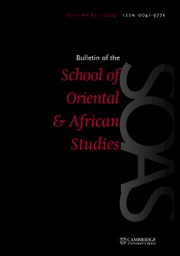This volume, lavishly printed with over a hundred full-page colour plates, was produced to accompany an exhibition of the same title mounted in the Iris and B. Gerald Cantor Art Gallery in the College of the Holy Cross, Worcester, MA, between 16 January and 6 April 2023. The book's initial focus and point of departure is a series of encaustic glazed floor tiles, dating from the mid-thirteenth century, that were recovered in the late eighteenth and nineteenth centuries from the ruins of the chapter house of the Benedictine abbey of Chertsey (Surrey). These, or more likely the moulds from which they were made, had probably been intended for the building works undertaken around 1250 by Henry III and his queen, Eleanor of Provence, at Westminster Palace, but ended up instead being used in a monastic setting on an island in the Thames some 25 miles away. In addition to tiles with purely decorative designs, the collection includes groups with thematically related images, such as the story of Tristan and Isolde and the labours of the months linked to the Zodiac. The first chapter, by Amanda Luyster (pp. 29–79), however, focuses on a group of twelve roundels depicting scenes of combat between knights, including a pair featuring Richard I and Saladin, and between knights and lions. Her painstaking analysis of these fragments and linking of them to the equally fragmentary Latin inscriptions that once enclosed them identifies the Crusades as a theme running through all the images and provides the starting point for a broader discussion, pursued throughout the book and exhibition, of the cultural impact of crusading on the art and literature of twelfth- and thirteenth-century Europe and more particularly England and France.
In following chapters, Suleiman Mourad counters the common perception of the crusades as a clash of civilizations by highlighting some examples of Christian–Muslim collaboration and co-existence in the Holy Land at the time of the Frankish kingdom (pp. 81–91), while David Nicolle gives a brief outline history of the Crusades in the twelfth and thirteenth centuries (pp. 93–107) and Euan Roger a succinct and well-referenced account of the history of Chertsey Abbey from its foundation around 666 until its dissolution in 1537 (pp. 109–24). Focusing more particularly on the subject matter of the Chertsey combat tiles, Richard Leson discusses epic sensibilities in French art and literature in the crusader period, illustrating how the kinds of heroic knightly struggles illustrated on the tiles are reflected in personal seals and architectural sculpture, as well as in Latin and especially French works of literature relating to the Crusades and in their accompanying manuscript illustrations (pp. 127–46). Cynthia Hahn gives a comprehensive overview of the movement of relics and reliquaries from the East to England between the fourth and nineteenth centuries (pp. 149–75), while Elizabeth Dospěl Williams discusses the influence on European art of imported luxury textiles from Byzantium and Islamic lands (pp. 177–200). The movement of luxury goods from the Levant to Europe is also examined by Eva Hoffman, with particular attention to inlaid metal objects decorated with Christological themes produced in Ayyubid lands (pp. 203–26), while Sarah Guérin discusses the importation of items of African ivory to England, in one case in 1254 still attached to a living elephant (pp. 229–53). Scott Redford traces an iconographic relationship between the representation of Aquarius, the water-carrier, on a tile from the Chertsey Zodiac series with depictions of a sāqin, or seated cup-bearer, on contemporary St Symeon ware pottery found in al-Mīna, Ḥamā and Acre (pp. 255–67). In the final essay, Paroma Chatterjee describes the Crusaders’ encounters with Roman and Byzantine sculpture in the context of the sack of Constantinople during the Fourth Crusade in 1204 (pp. 271–83). The book concludes with a series of shorter contributions by students describing and discussing some of the individual objects displayed in the exhibition (pp. 287–325).
Among the very few historical lapses may be noted a reference to a monk from Chertsey being sent to Rome in 1198 “as the events of the First Crusade and the siege of Antioch were unfolding” (pp. 110–12). Elsewhere (p. 136, pl. 53), the emperor Conrad III's felling of a Turk with a single sword blow in 1148 is mistakenly located at the siege of Ascalon (1153) instead of Damascus (William of Tyre, Chronicon, 17.4, cf. 17.21–30). Some points of interpretation may also be questioned. The mounted archer making a Parthian shot in fig. 15 appears from his dress to be more classical or oriental than medieval European in character (pp. 44–9). The tile text MORS / CRI / ACCI/DIT does not mean “The death of the enemy comes to pass”, although it could possibly represent Mors C(h)r(st)i accidit (cf. Aquinas, Summa Theologiae 3.81.4); however, two dots between the ends of the C may indicate a word break (hi]c : Ri[cardus ?), which if so would suggest that this tile fragment is misplaced (p. 63, pl. 11). The obverse inscription on the illustrated gold penny of Henry III reads HENRIC’ REX III’ (Henricus rex tertius), “King Henry the Third”, while the moneyer's name on the reverse is “William of London” (WILLEM ON LUND), not “at London” (pp. 318–19). The arms on the Limoges copper basin do not represent a Jerusalem cross but a Latin cross on a field of small crosslets. The “Jerusalem cross”, adopted by the Cypriot kings of Jerusalem in the 1280s, consisted of an equal-arm cross potent with a crosslet in each quarter, making five in all, representing the wounds of Christ (pp. 321–2). These, however, are minor quibbles, which in no way detract from the overall value of this pioneering volume.



